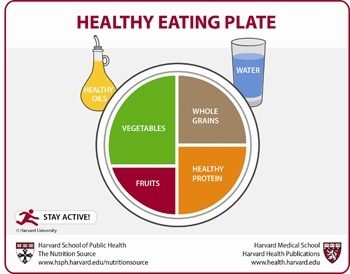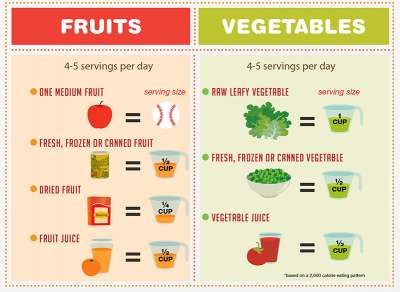I often joke with kids at my pediatric primary care clinic that vegetable is my favorite word. And parents seem to have a favorite question: How do I get my kid to eat more vegetables? We all know that eating fruits and vegetables is important. But how do you get a child to add more of these foods to their diet?
Why are vegetables and fruits so important in a child’s diet?
Children’s growing bodies require good nutrition, and vegetables and fruits are high in vitamins, minerals and fiber, and low in fats and calories. Increasing vegetables and fruits in children’s diets has short term benefits, such as improving mood, concentration, energy and even academic performance, and long-term benefits, such as boosting the immune system and decreasing the risk of developing cardiometabolic diseases and some cancers.
Benefits of vegetables and fruits:
- Promote a child’s healthy growth and development.
- Help prevent obesity and cardiometabolic diseases such as type 2 diabetes, high cholesterol, high blood pressure and heart disease.
- Strengthen a child’s immune system and help fight illnesses, which is more important now than ever.
- Contain fiber, which can aid in the proper function of the digestive system and prevent constipation.
- Improve mood, mental health and learning. More and more research suggests that eating a healthy and nutritious diet can improve mental health, enhance cognitive skills like concentration and memory and improve academic performance.
How much fruit and vegetables are enough?
The U.S. Department of Agriculture (USDA) and Department of Health and Human Services (HHS) recommend that half of our plate at every meal should be vegetables and fruits. The goal is 4 to 5 servings of fruits and vegetables per day, but remember, any amount is better than none. Serve a variety of fruits and vegetables, from every color of the rainbow, while limiting juice, to get a variety of nutrients and minerals.


Ways to vegetables and fruits in your child’s diet
Infants:
One of the keys to success is to start early. Children are most receptive to new flavors when they are developing their taste buds between 4 and 9 months, so it’s very important to start introducing infants early to many different flavors, especially the savory, earthy, bitter and sour flavors.
- Between 4 and 6 months old, flavor training can be done by smearing a bit of food on your baby’s lips or letting them lick small amounts of food off your finger several times a week.
- Flavor training is not intended to provide nutrition or replace breast milk or formula, but to introduce babies to new flavors.
- Early introduction of varied flavors can reduce baby’s picky eating, making solid food introduction a smoother process and promoting acceptance of healthier foods.
- It’s important to introduce new foods that are not masked by sweet purees. Sweet purees may increase flavor preference to sweet foods and reduce the acceptance of new foods later.
Toddlers:
Toddlers have a mind of their own, often refusing foods they loved the day before, but don’t get frustrated, this is a normal stage of development, which they will outgrow if you stick with it!
- Babies and toddlers are often fearful of new flavors. Offer new foods at least 10 to 15 times over several months and watch your toddler start to like it!
- Give fruits and vegetables at every meal, and snack time too. Giving fruits and vegetables early and often makes it more likely your toddler will eat them when they are older.
- Use snack times to increase fruit and vegetable intake. Pair fruits and vegetables with dairy products (such as grapes and cheese), lean proteins (such as apples and peanut butter) or whole-grain cereals and bread (such as banana sandwich on whole grain bread).
- No sugary drinks (including 100% fruit juice). Toddlers who drink sugary drinks begin to prefer sweet foods over healthy foods.
- Offer choices. Ask “Which would you like for dinner: broccoli or cauliflower?” instead of “Do you want broccoli for dinner?” When kids feel in control, they are more likely to try new things.
- Don’t battle over vegetables. Do not force your toddler to eat fruits or veggies, or scold or draw unnecessary attention to them if they don’t. This makes mealtime a negative experience for both you and your child. Just serve them and eat them yourself. They should be a natural part of your day.
- Be a good role model. You are your child’s best role model, eat more fruits and vegetables yourself! Your child sees and copies you.
School-aged kids:
Your child is now out of the house, making more choices on their own, but you can keep offering vegetables and fruits, making healthy food the easy option and being a good example for your child by eating fruits and veggies yourself.
- Add a fruit or vegetable to every meal and snack. For example, you can put fruit on cereal, add a piece of fruit or sliced veggies to your child’s lunch, use vegetables and dip for a snack or add a vegetable or two to the family’s dinner.
- Taste buds change. As your child grows and changes, so do taste preferences. You can have a big influence on those changes. Keep offering vegetables and fruits, even if they did not like them in the past. Offer one new food, in different forms, with other familiar foods.
- Make the healthy choice the easy choice.Keep fresh vegetables and fruit washed, cut up and in plain sight in the fridge so they are easy to grab when your child is hungry.
- Keep dried, frozen and canned vegetables and fruits on hand for a quick meal, topping, snack or smoothie.
- Add vegetables to favorite foods. For example, add vegetables on top of pizza or in pasta or mac and cheese.
- Try out vegetarian recipes. Look online for recipes to make your child’s favorite dishes using vegetables instead of grains or meats.
- Take advantage of your child’s hunger. Do not offer snacks or drinks (other than water) 2 to 3 hours before mealtime so your child is hungry at mealtime, and therefore more willing to try new foods. Offer vegetables by themselves at the beginning of the meal, like an appetizer.
- Get kids involved in the food process. Let them help you pick out a vegetable or fruit they would like to eat that week at the grocery store and prepare the meal with you. When kids feel in control, they are more likely to try new things.
- Eat as a family whenever possible. Research shows that kids eat more vegetables and fruits, and less fried foods and sugary drinks, when they eat with the entire family.
 https://riseandshine.childrensnational.org/wp-content/uploads/2025/12/Mom-nursing-feature.jpg
300
400
Rise and Shine
https://riseandshine.childrensnational.org/wp-content/uploads/2017/11/childrens_riseandshine_logo.jpg
Rise and Shine2025-12-04 11:29:032025-12-04 11:29:03Tips for surviving your first month of breastfeeding
https://riseandshine.childrensnational.org/wp-content/uploads/2025/12/Mom-nursing-feature.jpg
300
400
Rise and Shine
https://riseandshine.childrensnational.org/wp-content/uploads/2017/11/childrens_riseandshine_logo.jpg
Rise and Shine2025-12-04 11:29:032025-12-04 11:29:03Tips for surviving your first month of breastfeeding




 Allison Silva, MD, is a third-year pediatric resident at Children's National Hospital and plans to go into pediatric primary care after residency. She has a special interest in healthy nutrition and food insecurity, and does research in these areas.
Allison Silva, MD, is a third-year pediatric resident at Children's National Hospital and plans to go into pediatric primary care after residency. She has a special interest in healthy nutrition and food insecurity, and does research in these areas.


















Leave a Comment
Want to join the discussion?Feel free to contribute!